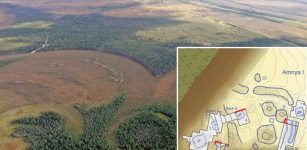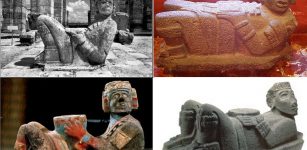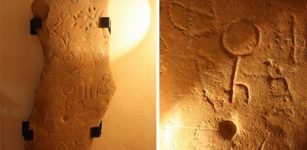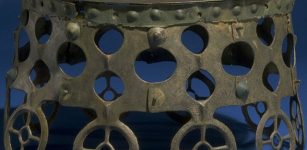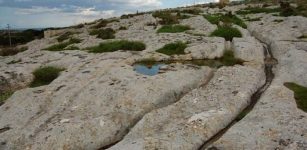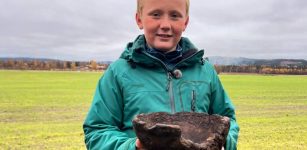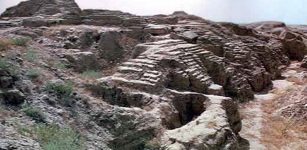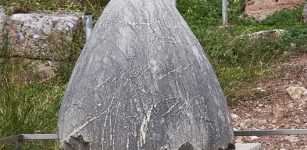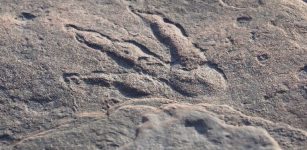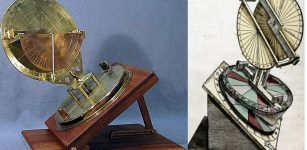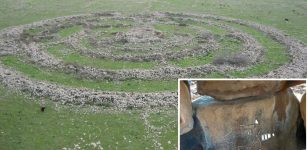Neanderthals And Other Ancient Humans Were Much More Intimate Than Previously Thought – DNA Shows
Jan Bartek - AncientPages.com - The study of ancient hominins, particularly Neanderthals, has been a subject of scientific inquiry since the discovery of their bones in 1856. This research has raised numerous questions about their similarities and differences compared to modern humans and the interactions between our ancestors and these ancient relatives. The field of study expanded with the discovery of the Denisovans, another group of hominins who inhabited Asia and South Asia.
Significant advancements have been made in our understanding of hominin history recently. Joshua Akey from Princeton's Lewis-Sigler Institute for Integrative Genomics, a collaborative effort between international geneticists and AI experts, has led the effort, yielding groundbreaking results. Their research has uncovered evidence of extensive genetic exchange and intermingling among early human groups.
This new data suggests a more complex and interconnected relationship between various hominin populations than previously thought. The findings indicate that the interactions between our ancestors and other ancient human groups were likely more frequent and intimate than earlier theories proposed
"This is the first time that geneticists have identified multiple waves of modern human-Neanderthal admixture," said Liming Li, a professor in the Department of Medical Genetics and Developmental Biology at Southeast University in Nanjing, China, who performed this work as an associate research scholar in Akey's lab.
"We now know that for the vast majority of human history, we've had a history of contact between modern humans and Neanderthals," said Akey. The hominins who are our most direct ancestors split from the Neanderthal family tree about 600,000 years ago, then evolved our modern physical characteristics about 250,000 years ago.
"From then until the Neanderthals disappeared—that is, for about 200,000 years—modern humans have been interacting with Neanderthal populations," he said.
Recent scientific research has significantly altered our understanding of Neanderthals. Contrary to earlier stereotypes, these hominins are now recognized as adept hunters and skilled toolmakers. Evidence suggests they employed advanced techniques for treating injuries and were well-adapted to cold European climates.
In scientific terminology, Neanderthals, Denisovans, and modern humans are all classified as humans. However, researchers typically use these terms without the "human" suffix for clarity and brevity.
A recent study led by Akey and his team has provided new insights into the genetic relationships between these hominin groups. Using genomic data from 2,000 contemporary humans, three Neanderthals, and one Denisovan, they mapped genetic exchanges over the past 250,000 years.
The research employed a novel genetic analysis tool called IBDmix, which utilizes machine learning to interpret genomic data. This approach differs from previous methods that relied on comparisons with "reference populations" assumed to have minimal Neanderthal or Denisovan DNA.
Interestingly, Akey's team discovered that even these reference populations, geographically distant from known Neanderthal habitats, contain small amounts of Neanderthal DNA. This genetic material was likely introduced through ancient human migrations.
Akey's team has established that even those referenced groups, who live thousands of miles south of the Neanderthal caves, have trace amounts of Neanderthal DNA, probably carried south by voyagers (or their descendants).
With IBDmix, Akey's team identified a first wave of contact about 200-250,000 years ago, another wave 100-120,000 years ago, and the largest one about 50-60,000 years ago.
That contrasts sharply with previous genetic data. "To date, most genetic data suggests that modern humans evolved in Africa 250,000 years ago, stayed put for the next 200,000 years, and then decided to disperse out of Africa 50,000 years ago and go on to people the rest of the world," said Akey.
"Our models show that there wasn't a long period of stasis, but that shortly after modern humans arose, we've been migrating out of Africa and coming back to Africa, too," he said. "To me, this story is about dispersal, that modern humans have been moving around and encountering Neanderthals and Denisovans much more than we previously recognized."
That vision of humanity on the move coincides with the archaeological and paleoanthropological research suggesting cultural and tool exchange between the hominin groups.
Detecting modern human–to-Neanderthal gene flow (H→N) and its consequences. Modern human–to-Neanderthal admixture causes a local increase in heterozygosity in the Neanderthal genome, a characteristic that enabled approaches to quantify and detect introgressed sequences. We leveraged modern human–introgressed sequences in the Neanderthal genome to refine estimates of Neanderthal ancestry in contemporary humans by decomposing IBDmix-detected segments into those attributable to human-to-Neanderthal (H→N) versus Neanderthal-to-human (N→H) gene flow in 2000 modern human individuals. We also used modern human–introgressed sequences to discover that Neanderthals had a smaller effective population size (Ne) than previously estimated and that a second wave of modern human–to-Neanderthal gene flow occurred ~100 to 120 thousand years ago (ka). bps, base pairs. Credit: Science (2024). DOI: 10.1126/science.adi1768
Li and Akey's key insight was to look for modern-human DNA in the genomes of the Neanderthals, instead of the other way around. "The vast majority of genetic work over the last decade has really focused on how mating with Neanderthals impacted modern human phenotypes and our evolutionary history—but these questions are relevant and interesting in the reverse case, too," said Akey.
They realized that the offspring of those first waves of Neanderthal-modern matings must have stayed with the Neanderthals, therefore leaving no record in living humans. "Because we can now incorporate the Neanderthal component into our genetic studies, we are seeing these earlier dispersals in ways that we weren't able to before," Akey said.
The final piece of the puzzle was discovering that the Neanderthal population was even smaller than previously believed.
Genetic modeling has traditionally used variation—diversity—as a proxy for population size. The more diverse the genes, the larger the population. But using IBDmix, Akey's team showed that a significant amount of that apparent diversity came from DNA sequences that had been lifted from modern humans, with their much larger population.
As a result, the effective population of Neanderthals was revised down from about 3,400 breeding individuals down to about 2,400.
Put together, the new findings paint a picture of how the Neanderthals vanished from the record, some 30,000 years ago.
"I don't like to say 'extinction,' because I think Neanderthals were largely absorbed," said Akey. His idea is that Neanderthal populations slowly shrank until the last survivors were folded into modern human communities.
This "assimilation model" was first articulated by Fred Smith, an anthropology professor at Illinois State University, in 1989. "Our results provide strong genetic data consistent with Fred's hypothesis, and I think that's really interesting," said Akey.
See also: More Archaeology News
"Neanderthals were teetering on the edge of extinction, probably for a very long time," he said. "If you reduce their numbers by 10 or 20%, which our estimates do, that's a substantial reduction to an already at-risk population.
"Modern humans were essentially like waves crashing on a beach, slowly but steadily eroding the beach away. Eventually, we just demographically overwhelmed Neanderthals and incorporated them into modern human populations."
The study was published in the journal Science
Written by Jan Bartek - AncientPages.com Staff Writer



